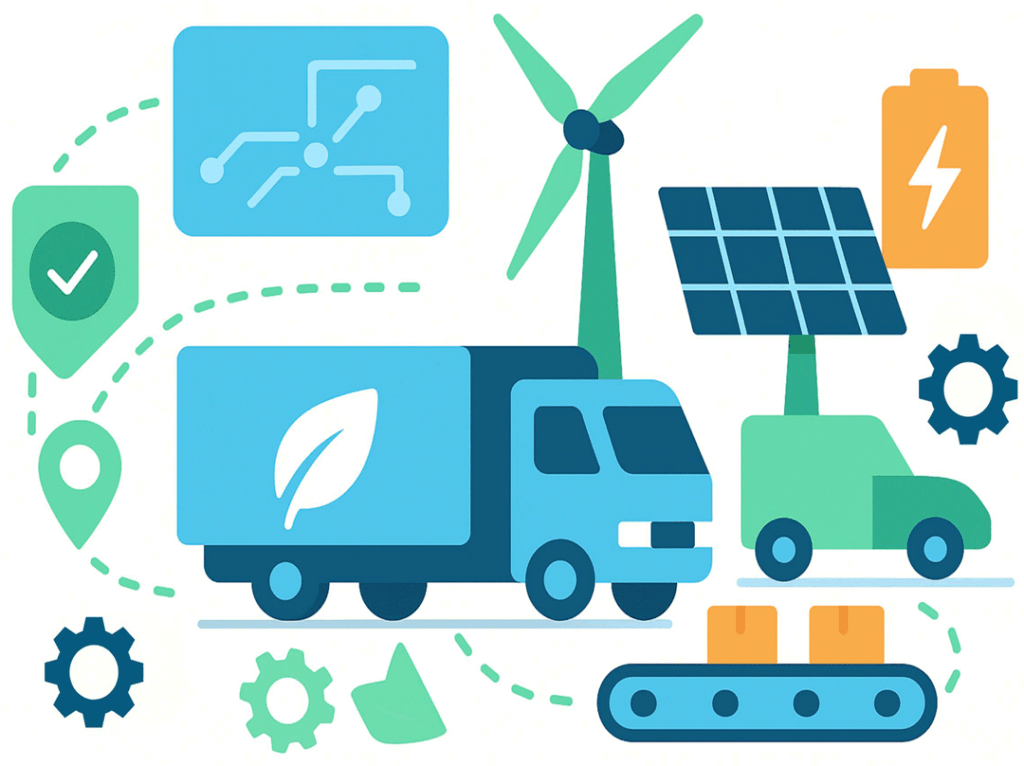The benefits of local digital consumption
In 2018, digital contributed to 4% of globalCO2 pollution, as much as civil aviation. This percentage will double by 2025 to 8%, as much as road transport. On the other hand, every 18 months, the amount of digital data generated is doubled. Storing so much data means consuming so much electricity. In 2018, digital data alone consumed 10% of the world's electricity. By 2025, this percentage is set to at least double.
So, in light of increasingly complex climatic, political and environmental issues, what are the advantages of local digital consumption?
Our current digital usage generates a large amount of data to be stored in data centers. Choosing where to store it means choosing, in part, its environmental impact. This is where local digital consumption comes into its own. Storing data in Swiss data centers does not have the same environmental impact as storing it in the default U.S. data centers. By definition, a data center is already very power-hungry. It is estimated that perm2 it consumes up to ten times the electricity consumed by a home or office. Producing 1 kWh of electricity in Switzerland generates 7.4 grams ofCO2,eq. In the USA, the figure is 1093 grams ofCO2,eq.[1] Let's take another example. Some large companies outsource their IT services to India. While this has economic benefits, it is detrimental to the environment. It has been shown that the environmental impact of equipment varies greatly depending on where it is used. A developer's laptop used in India for a year will have an environmental impact five times greater than in Europe and eleven times greater than in France. [2]
Buying local also has the advantage of better protecting our digital data. I'm not talking about cyber security, but rather privacy. Following the Cambridge Analytica scandal and the massive use of our data to influence us (even during elections!), it's important to question who we keep our data with.
Switzerland has become the new "El Dorado" for data protection. It has gone from banking secrecy to "bunker secrecy", and is now considered the3rd safest country in which to store digital data [3].
The circular economy also applies to the digital world. We speak of digital circularity. The good news is thatin Switzerland there is a wide range of alternatives to the most popular digital products. For example, Infomaniak offers an eco-friendly cloud and videoconferencing platform. Protonmail offers encrypted messaging as an alternative to American mailboxes. The High DC data center in La Chaux-de-Fonds stores its customers' data in the most environmentally-friendly way possible. Finally, Canopé helps Swiss companies deploy a sustainable digital strategy by putting companies in touch with local partners. These are four examples among many others.
The environmental impact of digital technology also largely depends on the manufacturing stage of electronic equipment. To reduce this impact, we can simply extend the life of our equipment, repair it or buy reconditioned. More and more stores and companies in Switzerland are offering these services. Digital circularity encourages the creation of new local jobs.
From a political point of view, European states have become aware of the seriousness of digital pollution and the urgency to act. From 2021, laws will be published to encourage digital circularity. In France, the Agec law will finance part of the cost of repairing electronic equipment. Then, the European Parliament voted in favor of a display on the lifespan and reparability of electronic equipment, as well as on the reduction of its waste. Switzerland will soon follow suit, if it hasn't already.
Digital circularity also has the advantage of fostering thedigital independence of companies and governments. We are all aware of the major issues we will have to face in the coming years. First of all, climate change. This will make it increasingly difficult to extract the rare earths needed to manufacture electronic equipment. This could result in a drop in global electronics production, leading to product scarcity and price inflation. In this context, could a computer or smartphone in the years to come cost several times its current price? It's highly likely. Add to this the many geopolitical conflicts we're currently witnessing. In particular, between China, the world's leading exporter of rare earths, and the United States, home of GAFAM*.
These two major issues are likely to make the digital market more volatile, uncertain, complex and expensive. Favoring digital circularity means gaining independence and resilience in the face of future risks.
In short, we're facing a new paradigm, not only for our food, transport and consumption habits, but also digitally. Digital circularity is one of the ways in which we can become resilient in the face of this mysterious future, which is fragile but full of opportunities. And let's not forget that local digital consumption must also go hand in hand with digital sobriety and social responsibility if we are to achieve our environmental goals.
In the digital sector, as everywhere else, the years to come will be defined by frugality: doing as well, or even better, but with fewer resources. Digital circularity will be essential to ensure the convergence of the environmental and digital transitions.

* GAFAM: acronym for Google, Apple, Facebook, Amazon and Microsoft
[1] Neuchâtel Energy Department - 2020
[2] The Shift Project - Digital Sobriety - 2020
[3] Report: Switzerland undercover - RTS - 2019





